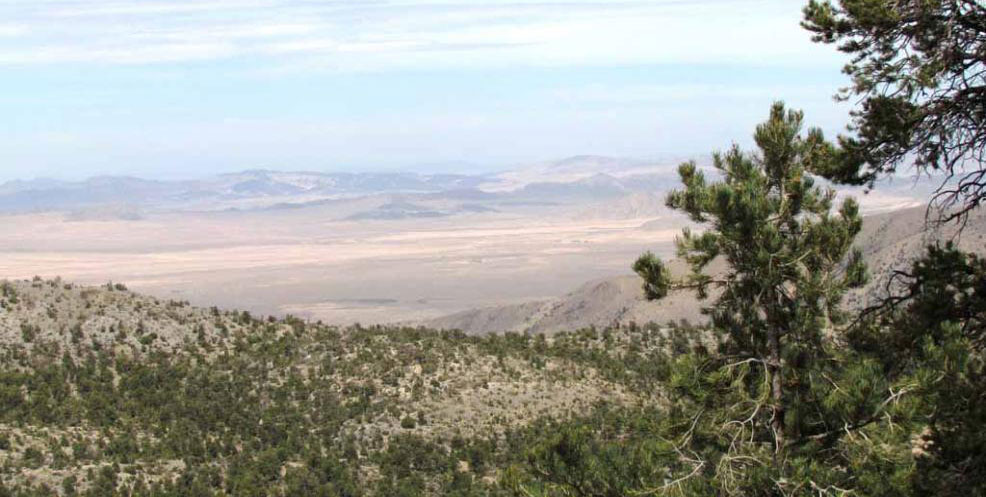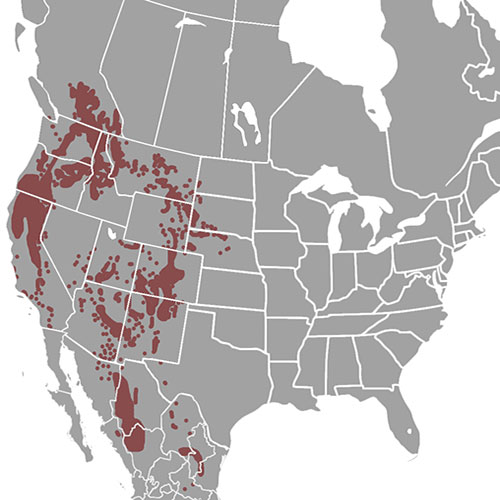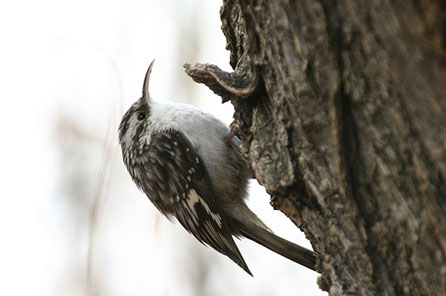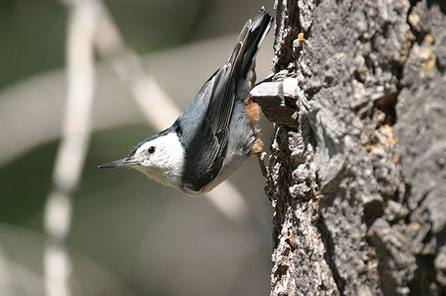As a consequence, many animal populations are restricted to patchy and isolated mountain-top distributions. In the absence of gene flow, these isolated groups begin to evolve independently, developing morphological and genetic characteristics that differ among populations. Given enough time, these diverging forms may become new species. This process is well documented in terrestrial organisms with limited dispersal ability (like small mammals and amphibians) where closely related—but different—species occupy different mountain ranges.

But what about birds? Do they simply fly over these otherwise uninhabitable inter-mountain regions, or do they choose not to attempt such journeys, and, like small mammals, their isolated populations are evolving independently of one another on different mountain ranges? These are the questions that Dr. John Klicka, Curator of Birds at the Burke Museum, and Dr. Garth Spellman, Curator of Birds at the Denver Museum of Natural History, sought out to answer with museum collections and field research.
Klicka and Spellman sampled populations of 15 common western montane bird species using genetic data (sequenced DNA) to look for evidence of genetic isolation and to measure relative amounts of gene flow among populations that occupy different mountain ranges.

The species examined include Steller’s Jay, Mountain Chickadee, Brown Creeper, Spotted Towhee, Hairy Woodpecker, and Black-headed Grosbeak. Most of these birds are wide-ranging, meaning they are found on most mountains of western North America, including the Rocky Mountains, the Sierra Nevada and Cascade Ranges, and the Sierra Madre Occidental, and Oriental of Mexico (many of these species are actually common here in Seattle, where the climatic conditions allow conifer forests to thrive, even at sea level).
Some species contain populations that are morphologically distinct from one another, suggesting long periods of isolation have occurred. For example, Hairy Woodpeckers from southern Mexico are much smaller and darker than their northern counterparts, and those on either side of the Cascade Range in Washington have long been known to possess distinctive coloration.
On the other hand, many of the species studied have little morphological variation from one population to another, suggestive of continuous gene flow between mountain ranges.
The genetic data gathered and analyzed for each of these bird species provided no one simple answer. For a few species (e.g. Red-breasted Nuthatch, Western Wood Pewee), it was clear that birds do regularly (and in large numbers) move across the landscape between mountain ranges, as no evidence of genetic isolation was recovered.
However, other species like the Brown Creeper, Mountain Chickadee, and White-breasted Nuthatch, displayed evidence of being “structured genetically” into two (or more!) isolated, independently evolving lineages that correspond with particular mountain ranges or regions.

Spotted Towhee is one of the 15 bird species typical of western montane habitats that were targeted in this study.

Rocky Mountain populations of the White-breasted Nuthatch have diverged genetically from populations in the Cascades and Sierra Nevada mountains.
The most commonly recovered pattern indicates isolation across the desert southwest and the Great Basin, with Rocky Mountain populations differing significantly from those in the Sierra Nevada and Cascade Ranges. The genetic data suggest that some of these lineages on either side of the Great Basin may have diverged from one another more than a million years ago.
The new lineages identified may represent new species, or lineages in the final stages of the speciation process. In either case, they represent important new components of avian biodiversity in western North America.
The data also provided another interesting bit of information. It identified several geographic regions where long isolated lineages of several species, were now in (secondary) contact with one another. For example, birds with Rocky Mountain “genes” and birds with Sierra Nevada – Cascades “genes” co-occur in the Okanagan Valley of northeastern Washington, and the Blue Mountains in the southeast.
These zones of overlap are of great interest, providing a window on the process of speciation, and providing much opportunity for future research.
Interesting questions that can be answered include: Do these areas represent hybrid zones, where interbreeding occurs, or are Rocky Mountain and Cascade forms reproductively isolated? If hybridization is occurring, are hybrid individuals at a selective disadvantage? How wide is the hybrid zone, is it stable or expanding? Is the hybrid zone moving? Does either divergent form have a competitive advantage over the other? Have these forms diverged ecologically as well as genetically?
Stay tuned… as we continue to learn more about this fascinating group of birds.

